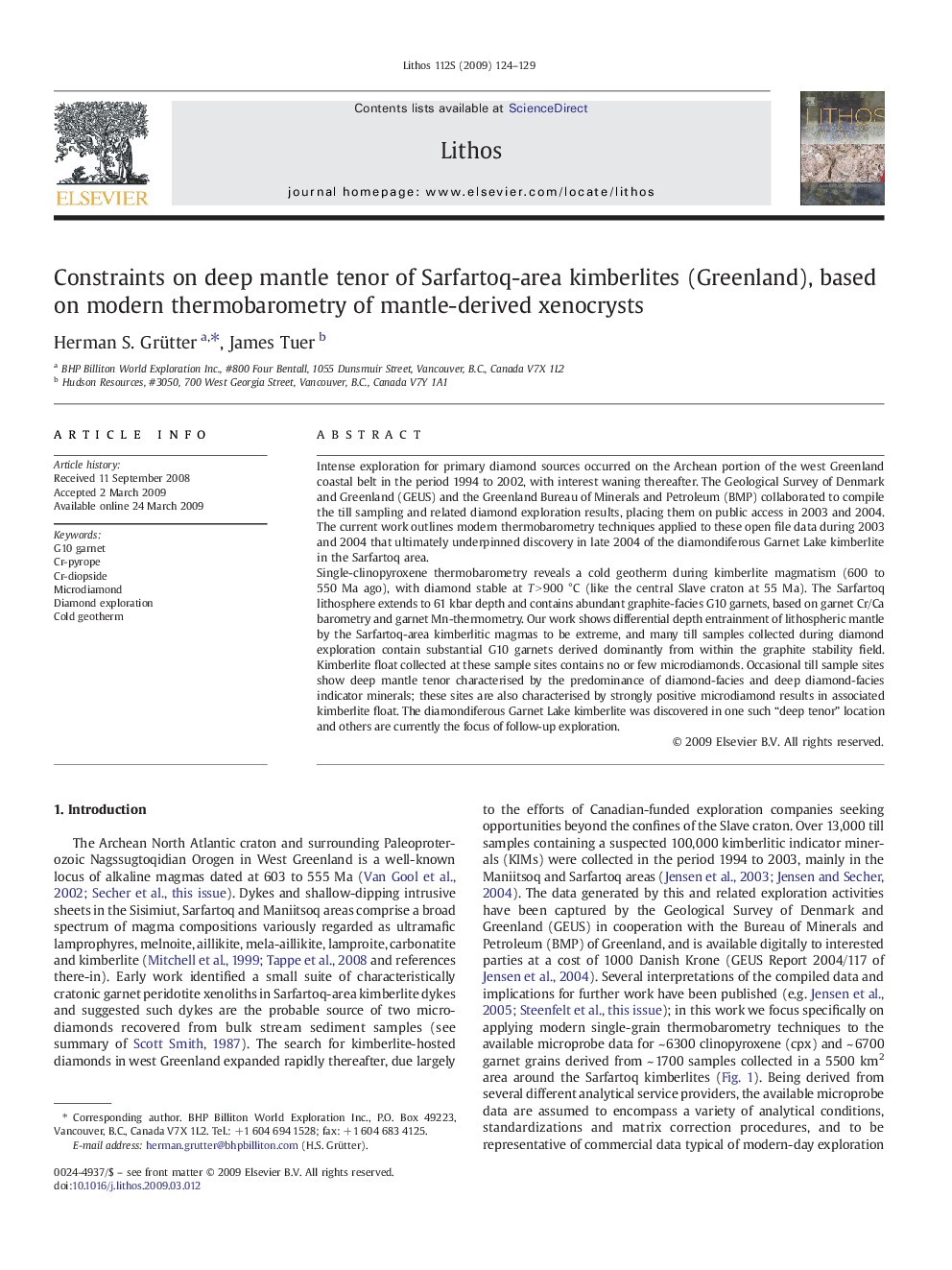| Article ID | Journal | Published Year | Pages | File Type |
|---|---|---|---|---|
| 4717253 | Lithos | 2009 | 6 Pages |
Intense exploration for primary diamond sources occurred on the Archean portion of the west Greenland coastal belt in the period 1994 to 2002, with interest waning thereafter. The Geological Survey of Denmark and Greenland (GEUS) and the Greenland Bureau of Minerals and Petroleum (BMP) collaborated to compile the till sampling and related diamond exploration results, placing them on public access in 2003 and 2004. The current work outlines modern thermobarometry techniques applied to these open file data during 2003 and 2004 that ultimately underpinned discovery in late 2004 of the diamondiferous Garnet Lake kimberlite in the Sarfartoq area.Single-clinopyroxene thermobarometry reveals a cold geotherm during kimberlite magmatism (600 to 550 Ma ago), with diamond stable at T > 900 °C (like the central Slave craton at 55 Ma). The Sarfartoq lithosphere extends to 61 kbar depth and contains abundant graphite-facies G10 garnets, based on garnet Cr/Ca barometry and garnet Mn-thermometry. Our work shows differential depth entrainment of lithospheric mantle by the Sarfartoq-area kimberlitic magmas to be extreme, and many till samples collected during diamond exploration contain substantial G10 garnets derived dominantly from within the graphite stability field. Kimberlite float collected at these sample sites contains no or few microdiamonds. Occasional till sample sites show deep mantle tenor characterised by the predominance of diamond-facies and deep diamond-facies indicator minerals; these sites are also characterised by strongly positive microdiamond results in associated kimberlite float. The diamondiferous Garnet Lake kimberlite was discovered in one such “deep tenor” location and others are currently the focus of follow-up exploration.
